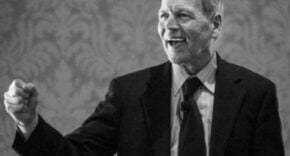Federal Reserve Board Chairman Jerome Powell. Kevin Dietsch/Getty Images
Sticky inflation and robust retail activity are telling signs that the Federal Reserve has failed to stifle demand, meaning investors should expect tighter policy and more weakness in markets, analysts said.
Though the Federal Reserve has already hiked benchmark rates by 450 basis points since last year to cool the economy and get inflation back under control, January made it apparent that demand remains high.
Last month, retail sales jumped 3%, overshooting estimates of a 1.9% increase. And consumer prices rose 6.4%, while producer prices climbed 6%, with both also topping views.
“The Fed wants to dampen demand — It’s not happening. Retail sales is a perfect example. The consumer is still out there,” Victoria Fernandez, chief market strategist at Crossmark Global Investments, said in an interview with CNBC.
“So if you want to crush demand in order to bring inflation down, then these positive numbers that normally we would be celebrating are telling us the Fed and other central banks are going to continue to go stronger.”
The data added to signs that the economy is still running too hot, following the January payroll report that showed a stunning 517,000 new jobs were added.
Still, such resilience will help the US economy avoid a deep recession, said Fernandez, who instead predicts a mild downturn. As for the stock market, she doesn’t expect a sell-off like in 2022, but sees a “pretty flat year.”
“Have that balanced outlook because we’re just going to be choppy, I think, for most of the year,” she added.
To be sure, Fed Chairman Jerome Powell has consistently indicated a readiness to keep driving rates up. But the market only now is starting to catch up, after earlier hoping that that the Fed was gearing to cut rates in 2023, not raise them.
“I think it’s very clear that that the liquidity in the market, consumer savings, and optimism about the job market continues to support consumption,” said Lisa Shalett, chief investment officer at Morgan Stanley Wealth Management, in a separate interview on CNBC.
“And for the Fed, this is really problematic, because part of the reason that the central banks raise interest rates in a battle with inflation is to cool demand. And that cooling of demand on the consumer side of the economy, on the services side of the economy, is just not coming through yet.”
Both strategists advised investors to add fixed-income investments to their portfolios and be tactical in choosing stocks. Shalett encouraged a diverse portfolio focused on growth and value stocks.
But unlike Fernandez, Shalett has a dimmer view on the market outlook overall.
“We have talked about the potential for a kind of a boom-bust scenario,” she said. “We would not be shocked to see a 15% to 20% pullback from current levels which would take us below the prior cycle.”









